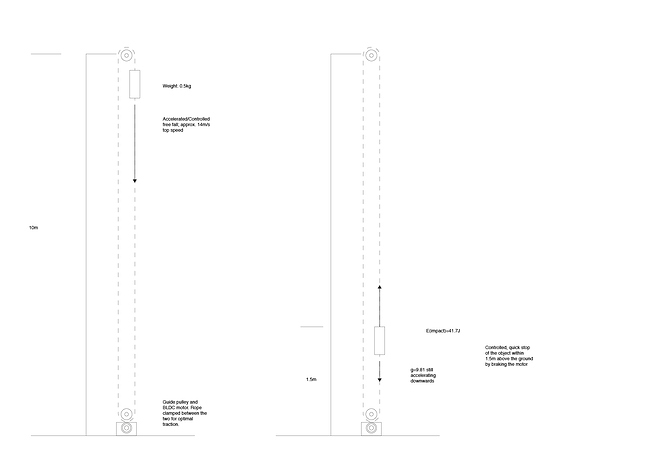Dear community,
I’ve been prototyping a free falling camera sled for a while that I would just let go at the top and then it would fall onto a padded surface. This has worked already quite well but now I want to be able to control the speed with which the sled travels vertically.
Please see the attached schematic drawing and photo of the sled.
It’s basically a sled for a follow camera which travels vertically on one wire rope on either side of the sled to keep it in balance. (See photo)
There’s an extra rope that is suspended between two pulleys at the top and bottom.
I now want to control the speed with which it falls (it’s supposed to be a controlled free fall) and the moment it comes to a smooth stop before it hits the ground.
I did some research and chose the following parts for the setup:
- Brushless DC motor
- Controlled by Arduino with a Mosfet Shield
At the moment I’m still unsure how strong the motor has to be in order to slow down the sled and which technique to use for braking.
Accelerating the sled downwards doesn’t need much force since gravity is doing most of it. Only the air drag (and some friction on the wire ropes) would slow down the sled which I want to overcome with the motor.
The kinetic energy of the sled after a free fall of 8.5m is approximately 42J.
If I want to motor to do the braking, it has to be able to handle this energy. I tried to find the right formulas in order to calculate the resulting torque the motor has to be able to withstand but didn’t manage. If you have a hint here, great!
A question that follows from my assumption is, can the BLDC motor handle this strong braking at all? Or are BLDC motors in general not good for braking?
Any help would be greatly appreciated.


